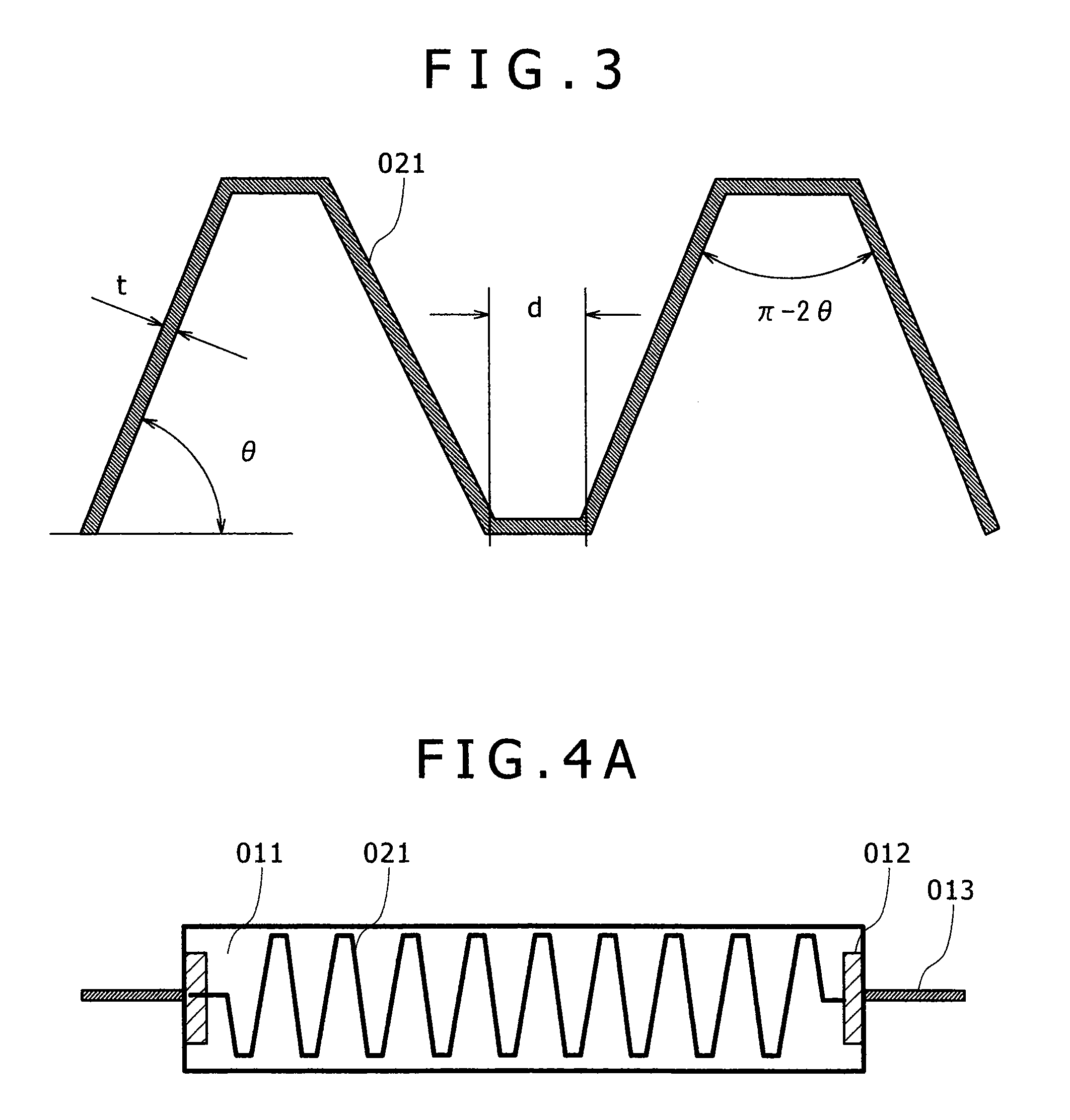Thick film resistor
a resistor and film technology, applied in the direction of resistors, resistive elements, adjustable resistors, etc., can solve the problem of resistor negatively affecting a noise characteristic, and achieve excellent noise characteristics and high potential distribution stability
- Summary
- Abstract
- Description
- Claims
- Application Information
AI Technical Summary
Benefits of technology
Problems solved by technology
Method used
Image
Examples
first embodiment
of Resistor
[0038]FIG. 4A is a schematic diagram of a thick film resistor having a zigzagged wiring pattern according to a first embodiment of the present invention. In the case of a flat plate type thick film resistor, since a wiring pattern of a resistance wire 021 is sintered by screen printing after electrode conductors 012 that face each other are formed on an insulating substrate 011, there is no problem in manufacturing a thick film resistor as shown in FIG. 4A when a mask for the screen printing is designed to satisfy Expression 1.
[0039]FIG. 4B illustrates a state of an equipotential line on a plane where a resistance wire is disposed. In FIG. 2, the spacing between the equipotential lines is narrowed outside the bent section of the resistance wire, but in FIG. 4B, the spacing between the equipotential lines is widened outside of the bend section by properly selecting a bending angle and as a result, the equipotential lines 041 become parallel to each other. That is, it can b...
second embodiment
of Resistor
[0041]The resistivity of the thick film resistor slightly varies depending on the mixing, the sintering temperature, etc. of a paste material used for the resistance wire. Therefore, it is difficult to accurately match a final resistance value with a predetermined value only by designing the geometrical shape of the resistance wire. As a method of adjusting the above, a trimming process to mechanically correct a partial shape of the resistance wire has to be necessarily performed. In general, laser irradiation or sandblasting can be used for the trimming process. However, the laser irradiation and the sandblasting are the same as each other in that parts of all the resistors are cut and removed.
[0042]Even in the thick film resistor according to the second embodiment of the present invention, the trimming process is considered to be necessarily in practical use performed. It is preferable that the used trimming method maintains the shape that satisfies Expression 1 in orde...
third embodiment
of Resistor
[0043]FIG. 6 illustrates an example of a case that a resistor according to the present invention and a resistor for adjusting a resistance value by the trimming process are formed on the same insulating substrate. In this example, since the two resistors are connected to each other in series, the two resistors share one electrode. The resistor of the present invention and the resistor for adjusting the resistance value may be separately connected to the electrode and plural resistors may be connected to the electrode so that a combined resistance value becomes a predetermined resistance value after the two resistors are manufactured as completely different components. At this time, the resistor of the present invention takes charge of a main function of the resistance value and the other resistor takes charge of adjusting the final resistance value.
PUM
 Login to View More
Login to View More Abstract
Description
Claims
Application Information
 Login to View More
Login to View More - R&D
- Intellectual Property
- Life Sciences
- Materials
- Tech Scout
- Unparalleled Data Quality
- Higher Quality Content
- 60% Fewer Hallucinations
Browse by: Latest US Patents, China's latest patents, Technical Efficacy Thesaurus, Application Domain, Technology Topic, Popular Technical Reports.
© 2025 PatSnap. All rights reserved.Legal|Privacy policy|Modern Slavery Act Transparency Statement|Sitemap|About US| Contact US: help@patsnap.com



